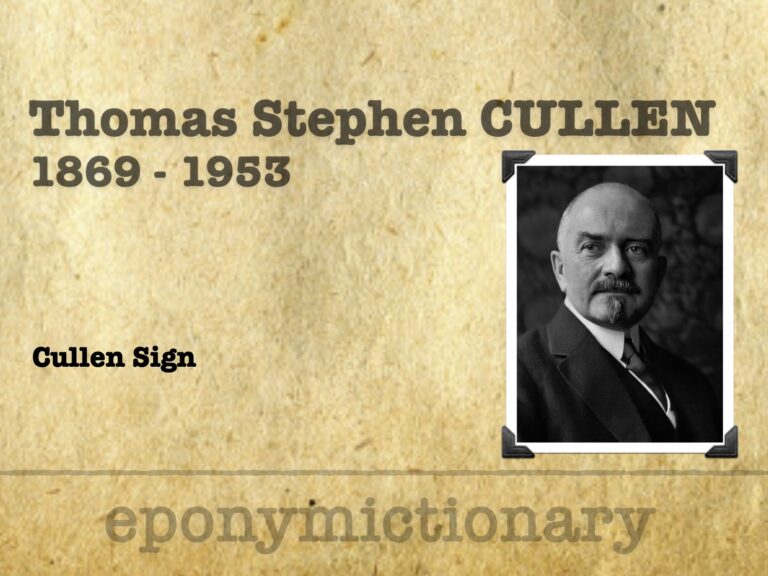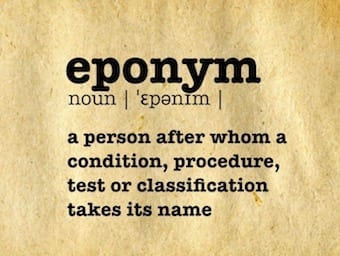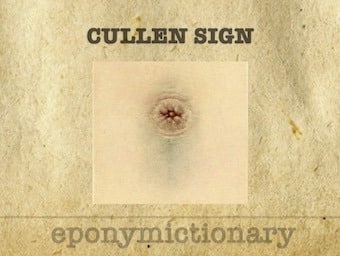
Thomas S. Cullen
Thomas Stephen Cullen (1869 – 1953) was a Canadian gynecologist. Eponymously affiliated with Cullen sign (1918)

Thomas Stephen Cullen (1869 – 1953) was a Canadian gynecologist. Eponymously affiliated with Cullen sign (1918)

John Henry Bryant (1867–1906) English physician. Eponym: Blue Scrotum Sign of Bryant associated with ruptured abdominal aortic anurysm (1903)

Non-traumatic abdominal ecchymosis of the abdominal wall and flanks (Grey Turner, Cullen and Stabler); scrotum (Bryant) and upper thigh (Fox) as clues to potentially serious causes of abdominal pathology.

Bryant’s sign: Scrotal ecchymosis associated with ruptured abdominal aortic aneurysm (AAA) first described in 1903 by John Henry Bryant (1867-1906)

Cullen sign: superficial bruising in the subcutaneous fat around the umbilicus. 1918 Thomas Cullen (1869-1953) ruptured ectopic pregnancy

Grey Turner sign refers to bruising of the flanks. Originally described 1919 (published 1920) by George Grey Turner (1877–1951) most commonly associated with acute pancreatitis

George Grey Turner (1877–1951) English surgeon. Eponym: Grey Turner sign after description of flank ecchymosis in 1919 (published 1920)

Fox's sign: non-traumatic ecchymosis over the upper outer aspect of the thigh secondary to abdominal haemorrhage. First described by English surgeon John Adrian Fox in 1966

John Adrian Fox English surgeon. Eponym: Fox's sign (1966) non-traumatic ecchymosis upper outer thigh with abdominal haemorrhage

Francis (Frank) Edward Stabler (1902 – 1967) English surgeon, obstetrician and gynaecologist. Eponym: Stabler Sign - atraumatic abdominal wall ecchymosis

Retroperitoneal haemorrhage is bleeding into the retroperitoneal space, either occurring spontaneously or secondary to an injury or illness